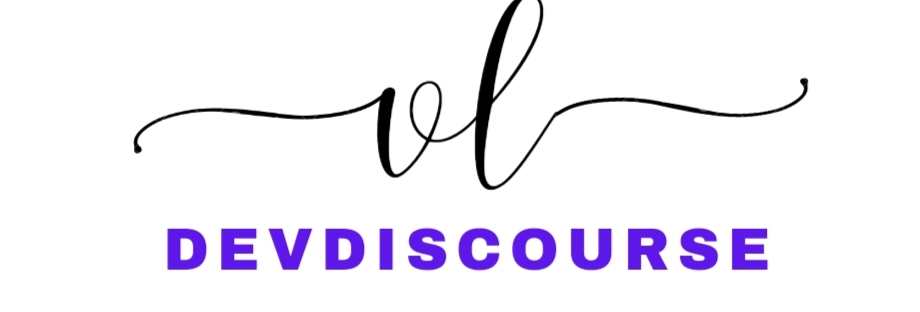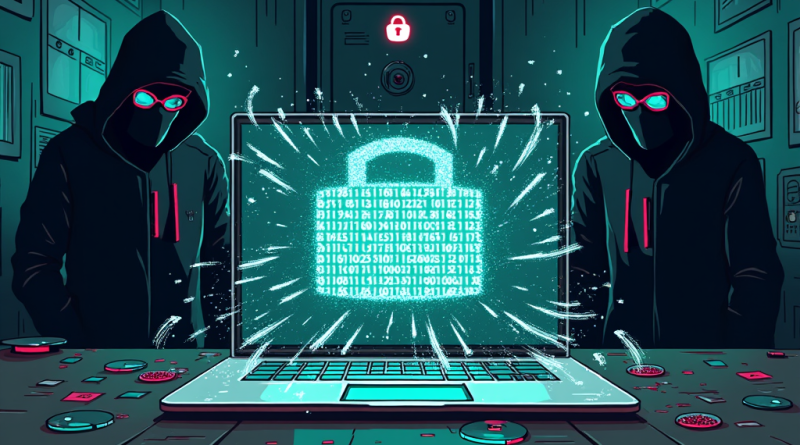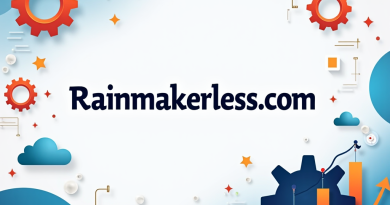Uncovering the “i_Kunzite Leak”: Origins, Impacts, and What We Know So Far
The digital world is no stranger to leaks, hacks, and data breaches. Over the years, such incidents have exposed vulnerabilities in even the most secure systems, raising concerns about privacy, security, and accountability. The latest term creating a buzz across the internet is the “i_Kunzite leak.” But what exactly is this leak, and why has it garnered so much attention?
This article delves into the details surrounding the i_Kunzite leak, offering insights into what it entails, its possible origins, the potential ramifications, and the broader context of cybersecurity in today’s world. After reading this, you will have a better understanding of what the i_Kunzite leak is and why it matters.
What is the i_Kunzite Leak?
The i_Kunzite leak appears to refer to the unauthorized disclosure or leak of confidential information involving a high-profile individual, company, or possibly even a collection of data sets tied to a unique project or product. The name “Kunzite” could relate to a code name, project alias, or possibly even a digital pseudonym.
While the full scope of the leak is not yet public knowledge, early reports suggest that this leak involves sensitive information from a source that was meant to be kept confidential. The fact that the word “leak” is attached to this name indicates that whatever information was disclosed, it wasn’t supposed to be made public, sparking concerns about security lapses.
Given the mysterious nature of the “i_Kunzite” leak, many are speculating whether it has connections to a larger cyber-attack, an internal breach, or a whistleblower situation. Regardless, such leaks can lead to widespread consequences, particularly if the leaked data involves personally identifiable information (PII) or corporate secrets.
The Origins of the i_Kunzite Leak
Leaks like these often have roots in a variety of causes. They can stem from an insider with access to sensitive information, a malicious cyberattack, or even an accidental data breach due to improper security protocols. Here’s what we know so far about the possible origins of the i_Kunzite leak:
- Insider Threat: Sometimes, leaks happen due to an individual working within the organization. This could be a disgruntled employee, an opportunist looking for financial gain, or even a whistleblower aiming to expose unethical or illegal activity.
- Cyberattack: In the age of hacking and data breaches, sophisticated attacks can lead to the unauthorized exposure of sensitive information. Hackers often use vulnerabilities in systems or employ social engineering tactics to gain access to confidential data.
- Accidental Exposure: Not all leaks are intentional. In some cases, sensitive information is accidentally exposed due to lax security protocols, such as misconfigured servers or cloud storage.
- Whistleblower: There is also the possibility that the i_Kunzite leak is the work of a whistleblower who believes that the information should be public for ethical or moral reasons. These individuals may disclose confidential information to the public to expose wrongdoing or corporate malpractices.
While these theories remain speculative, understanding the potential causes of the i_Kunzite leak helps paint a broader picture of the situation.
Potential Ramifications of the i_Kunzite Leak
Any leak of confidential information can have far-reaching consequences, both for the individuals or organizations involved and for the broader public. Depending on the nature of the data involved, here are some of the possible impacts of the i_Kunzite leak:
- Damage to Reputation: Leaks often tarnish the reputations of those involved, especially if the leaked information reveals unethical, illegal, or immoral behavior. For corporations, such leaks can erode trust with customers, partners, and investors.
- Financial Loss: Whether it’s due to lost business, litigation, or penalties, leaks often lead to significant financial consequences. Companies that suffer from data breaches often have to deal with legal costs, regulatory fines, and a loss of consumer trust, which can impact their bottom line.
- Regulatory Consequences: In some jurisdictions, leaks that involve personally identifiable information (PII) or corporate secrets can lead to regulatory investigations and penalties. Organizations must comply with privacy laws, and failure to protect sensitive data can result in hefty fines.
- Legal Action: If individuals or organizations are harmed by the leaked information, they may take legal action against the party responsible for the leak or the organization that failed to prevent it. This can lead to lawsuits, settlements, and other legal repercussions.
- Public Trust: If the i_Kunzite leak involves sensitive government information or information related to public services, it could erode public trust in those institutions. The impact of such leaks can be profound, particularly if they reveal misconduct or security failures.
- Operational Disruptions: Companies and institutions affected by leaks often have to divert resources to manage the fallout, including conducting internal investigations, enhancing security measures, and responding to public scrutiny. This can cause disruptions to their daily operations and long-term goals.
The Broader Cybersecurity Context
In the context of increasing cybersecurity threats, leaks like i_Kunzite are a reminder of how vulnerable organizations can be. Cybersecurity has become one of the most critical aspects of organizational operations in the 21st century. Despite advancements in security technology, no system is entirely immune to breaches.
One key aspect of the modern cybersecurity landscape is the concept of “zero trust.” This approach assumes that every access request, whether from inside or outside the network, could be a potential threat. Organizations are increasingly adopting zero-trust models, where they continuously verify and authenticate user identity and access before allowing any connection to the network.
Furthermore, cyber threats are becoming more sophisticated, and the tools used by hackers are evolving. From ransomware attacks to phishing schemes, the methods used to exploit systems are varied and often tailored to the specific vulnerabilities of the target.
For organizations, the i_Kunzite leak is likely another wake-up call to bolster security measures, implement multi-factor authentication (MFA), encrypt sensitive data, and regularly audit their security protocols.
How to Protect Against Future Leaks
To prevent incidents like the i_Kunzite leak, organizations must implement robust cybersecurity measures. Here are some best practices that can mitigate the risk of future leaks:
- Regular Security Audits: Conduct regular audits to identify vulnerabilities in your system and address them promptly. This includes both technical audits of your software and hardware systems as well as audits of internal processes.
- Encryption: Encrypt sensitive data both in transit and at rest. Even if hackers or unauthorized individuals gain access to your data, encryption ensures that they cannot easily read or use the information.
- Multi-Factor Authentication (MFA): MFA adds an extra layer of protection by requiring users to provide multiple forms of verification to access sensitive information. Even if a hacker steals a password, they would need additional credentials to gain access.
- Insider Threat Detection: Implement measures to monitor for suspicious activity by employees or other insiders. This could include monitoring network activity, restricting access to sensitive data, and employing behavioral analytics tools.
- Employee Training: Human error is one of the leading causes of leaks and breaches. Provide employees with regular cybersecurity training to help them recognize phishing attempts, use strong passwords, and follow best practices for data security.
- Incident Response Plan: Have a well-defined incident response plan in place in case a leak does occur. This will help you respond quickly and minimize the damage.
Conclusion
The i_Kunzite leak serves as a stark reminder of the importance of safeguarding sensitive information in a digital age where cyber threats are omnipresent. Whether it’s the result of an insider threat, a sophisticated cyberattack, or a whistleblower, such leaks can have serious consequences for individuals, businesses, and public institutions alike.
In the wake of the i_Kunzite leak, organizations must take proactive steps to bolster their cybersecurity measures, protect sensitive data, and remain vigilant against potential threats. By doing so, they can minimize the risk of future leaks and maintain trust with their stakeholders.
Frequently Asked Questions (FAQs) About the i_Kunzite Leak
- What is the i_Kunzite leak? The i_Kunzite leak refers to the unauthorized disclosure of sensitive or confidential information involving a specific project, individual, or company. The full details of the leak have yet to be publicly confirmed.
- How did the i_Kunzite leak occur? The exact cause of the i_Kunzite leak remains unclear. It could have been the result of an insider threat, a cyberattack, or even accidental exposure of confidential information.
- Who is behind the i_Kunzite leak? As of now, there is no confirmed information about who is responsible for the leak. It could involve hackers, an insider, or possibly a whistleblower.
- What information was leaked in the i_Kunzite leak? The specific details of what was leaked are still being investigated. Early speculation suggests that the leak involved sensitive corporate data or personal information.
- What are the consequences of the i_Kunzite leak? Depending on the nature of the leak, the consequences could include reputational damage, financial loss, legal action, and regulatory penalties for the organization involved.
- Can leaks like i_Kunzite be prevented? While it is impossible to completely eliminate the risk of leaks, organizations can reduce their likelihood by implementing robust cybersecurity measures, such as encryption, multi-factor authentication, and regular security audits.
What should organizations do after a leak occurs? After a leak, organizations should immediately investigate the incident, assess the damage, notify affected individuals, and take steps to prevent future leaks. They may also need to cooperate with regulatory authorities and deal with legal consequences.




